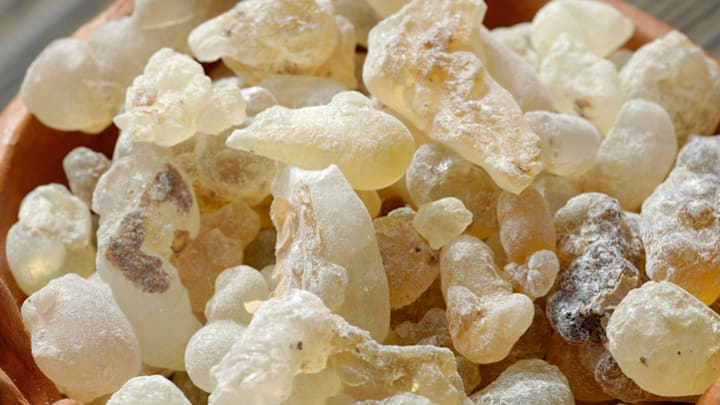In the typical Christmastime narrative of Jesus Christ’s birth, he’s born in a manger and visited by three wise men. They’re sometimes referred to as kings from the East or the Orient, and sometimes as Magi, and they come bearing gifts of gold, frankincense, and myrrh.
That first one is something most people are familiar with. The other two are a little more obscure.
Frankincense and myrrh are the dried sap of trees, also known as resin. Frankincense comes from the deciduous trees of the genus Boswellia, and myrrh from some species in the genus Commiphora, all of which are found on the Horn of Africa and the coastal countries of the Arabian Peninsula.

Extracting the sap for frankincense and myrrh is essentially the same process: Harvesters make a vertical cut in the tree’s trunk, piercing the sap reservoirs inside the bark. The sap oozes out and drips down the trunk and is left to dry and harden. After a few days or weeks, harvesters come back and collect the lumps of resin.
Both resins have traditionally been used as incense and medicine. Frankincense has a woody, fruity smell that is activated when it’s burned; it perfumed ancient Roman homes, archaic Egyptian rituals, and modern Catholic masses. In antiquity, physicians used frankincense to treat ailments ranging from poisoning to diarrhea to leprosy. In some Asian traditional medicines it’s a treatment for indigestion and relieving inflammation.

Myrrh, meanwhile, has a medicinal, somewhat bitter smell when it’s burned. It is an astringent (a substance that causes tissues to constrict), so it was often used to dress wounds. Today, it’s still used to prevent and treat gum disease, and it sometimes shows up in toothpastes and mouthwashes.
Myrrh can also be added to alcoholic drinks and wine. It flavors some brands of fernet, the Italian liqueur that’s an unofficial national drink of Argentina.
Have you got a Big Question you’d like us to answer? If so, let us know by emailing us at bigquestions@mentalfloss.com.
A version of this story was published in 2012; it has been updated for 2023.
